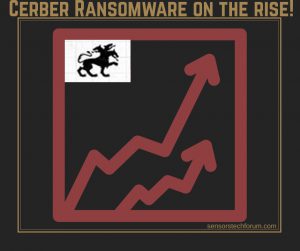
This article will help you remove .cerber3 file extension virus (Locky ransomware) successfully. Follow the ransomware removal instructions below.
One of the most devastating viruses out there – Cerber ransomware has been released in a 3rd version, adding a .cerber3 file extension to encrypted files and changing the file-names as well, leaving the # HELP DECRYPT #.txt file after encryption. The Cerber ransomware viruses have been notorious for an immensely strong encryption and new versions of them are released as soon as malware researchers discover decryptors for them. Users who have been infected by this virus, should not comply by the ransom note dropped by this virus and not pay any type of ransom money to the cyber-criminals and not comply to any instructions in the ransom note of the virus. Instead, we advise you to follow this article, because we will update it with more information about Cerber ransomware’s 3rd version, how to remove it and alternative methods to try and restore your files.

Threat Summary
| Name |
Cerber 3 |
| Type | Ransomware |
| Short Description | The malware encrypts users files using a strong encryption algorithm, making direct decryption possible only via a unique decryption key available to the cyber-criminals. |
| Symptoms | The user may witness ransom notes and “instructions” and a sound message all linking to a web page and a decryptor. Changed file names and the file-extension cerber3 has been used. |
| Distribution Method | Via an Exploit kit, Dll file attack, malicious JavaScript or a drive-by download of the malware itself in an obfuscated manner. |
| Detection Tool |
See If Your System Has Been Affected by malware
Download
Malware Removal Tool
|
| User Experience | Join our forum to Discuss Cerber 3 Ransomware. |
| Data Recovery Tool | Windows Data Recovery by Stellar Phoenix Notice! This product scans your drive sectors to recover lost files and it may not recover 100% of the encrypted files, but only few of them, depending on the situation and whether or not you have reformatted your drive. |

Cerber 3 Virus – How Does It Infect
Similar to the other Cerber(Cerber Version 2) viruses, this ransomware does not limit itself to a simple executable that infects the user. Instead, it is a whole operation that is created to synchronize a variety of infection and spamming technologies and techniques into one big and successful operation, called Cerber ransomware. This includes several different tools that are being used to infect users with the virus:
- Malware obfuscators to hide Cerber 3 ransomware’s files from any real-time protections and firewalls.
- File joiners that may conceal the payload dropper of the virus by combining them with legitimate files, like Microsoft Office documents that have malicious macros, for instance.
- Exploit Kits which may be used for a successful download of the directly by connecting to the command and control server of the cyber-criminals from the infected machine itself.
- Malicious JavaScript (.js) files disguised as legitimate files that may cause the infection. Themselves.
Such tools may be used in combinatain with spamming bots or spamming services that may spread the malicious files belonging to Cerber 3 ransowmare via several different methods, mainly in the form of uploads on malicious URLs or as e-mail attachments.
Below is an example of a spam e-mail, the malicious URLs of which may lead to a browser redirect that could cause a drive-by download infection with Cerber ransomware:

Cerber Ransowmare – In-Depth Information
As soon as it has been dropped on the computer, Cerber 3 may be dropped on key Windows folders with files that have different names. Several directories it may exist in are the following Windows targeted locations:
Along with CryptoWall and Locky ransomware, Cerber may also modify the registry entries of infected computers, to make the malicious executable that may be different type of file (.tmp, .dll, .js, .exe) run when Windows boots up and encrypt a wide variety of files even before the antivrus program of the computer has started. The registry entries to make it run on system startup are the following keys in Windows Registry Editor:
HKEY_LOCAL_MACHINE \Software \Microsoft \Windows \CurrentVersion \RunOnce
As soon as Cerber 3 ransomware’s encryption, begins the user is doomed. The virus may immediately scan for a wide variety of file types and encrypt them as soon as it detects them:
→ .1cd, .3dm, .3ds, .3fr, .3g2, .3gp, .3pr, .7z, .7zip, .aac, .ab4, .abd, .acc, .accdb, .accde, .accdr, .accdt, .ach, .acr, .act, .adb, .adp, .ads, .agdl, .ai, .aiff, .ait, .al, .aoi, .apj, .apk, .arw, .ascx, .asf, .asm, .asp, .aspx, .asset, .asx, .atb, .avi, .awg, .back, .backup, .backupdb, .bak, .bank, .bay, .bdb, .bgt, .bik, .bin, .bkp, .blend, .bmp, .bpw, .bsa, .c, .cash, .cdb, .cdf, .cdr, .cdr3, .cdr4, .cdr5, .cdr6, .cdrw, .cdx, .ce1, .ce2, .cer, .cfg, .cfn, .cgm, .cib, .class, .cls, .cmt, .config, .contact, .cpi, .cpp, .cr2, .craw, .crt, .crw, .cry, .cs, .csh, .csl, .css, .csv, .d3dbsp, .dac, .das, .dat, .db, .db_journal, .db3, .dbf, .dbx, .dc2, .dcr, .dcs, .ddd, .ddoc, .ddrw, .dds, .def, .der, .des, .design, .dgc, .dgn, .dit, .djvu, .dng, .doc, .docm, .docx, .dot, .dotm, .dotx, .drf, .drw, .dtd, .dwg, .dxb, .dxf, .dxg, .edb, .eml, .eps, .erbsql, .erf, .exf, .fdb, .ffd, .fff, .fh, .fhd, .fla, .flac, .flb, .flf, .flv, .flvv, .forge, .fpx, .fxg, .gbr, .gho, .gif, .gray, .grey, .groups, .gry, .h, .hbk, .hdd, .hpp, .html, .ibank, .ibd, .ibz, .idx, .iif, .iiq, .incpas, .indd, .info, .info_, .ini, .iwi, .jar, .java, .jnt, .jpe, .jpeg, .jpg, .js, .json, .k2p, .kc2, .kdbx, .kdc, .key, .kpdx, .kwm, .laccdb, .lbf, .lck, .ldf, .lit, .litemod, .litesql, .lock, .log, .ltx, .lua, .m, .m2ts, .m3u, .m4a, .m4p, .m4v, .ma, .mab, .mapimail, .max, .mbx, .md, .mdb, .mdc, .mdf, .mef, .mfw, .mid, .mkv, .mlb, .mmw, .mny, .money, .moneywell, .mos, .mov, .mp3, .mp4, .mpeg, .mpg, .mrw, .msf, .msg, .myd, .nd, .ndd, .ndf, .nef, .nk2, .nop, .nrw, .ns2, .ns3, .ns4, .nsd, .nsf, .nsg, .nsh, .nvram, .nwb, .nx2, .nxl, .nyf, .oab, .obj, .odb, .odc, .odf, .odg, .odm, .odp, .ods, .odt, .ogg, .oil, .omg, .one, .orf, .ost, .otg, .oth, .otp, .ots, .ott, .p12, .p7b, .p7c, .pab, .pages, .pas, .pat, .pbf, .pcd, .pct, .pdb, .pdd, .pdf, .pef, .pem, .pfx, .php, .pif, .pl, .plc, .plus_muhd, .pm!, .pm, .pmi, .pmj, .pml, .pmm, .pmo, .pmr, .pnc, .pnd, .png, .pnx, .pot, .potm, .potx, .ppam, .pps, .ppsm, .ppsx,.ppt, .pptm, .pptx, .prf, .private, .ps, .psafe3, .psd, .pspimage, .pst, .ptx, .pub, .pwm, .py, .qba, .qbb, .qbm, .qbr, .qbw, .qbx, .qby, .qcow, .qcow2, .qed, .qtb, .r3d, .raf, .rar, .rat, .raw, .rdb, .re4, .rm, .rtf, .rvt, .rw2, .rwl, .rwz, .s3db, .safe, .sas7bdat, .sav, .save, .say, .sd0, .sda, .sdb, .sdf, .sh, .sldm, .sldx, .slm, .sql, .sqlite, .sqlite3, .sqlitedb, .sqlite-shm, .sqlite-wal, .sr2, .srb, .srf, .srs, .srt, .srw, .st4, .st5, .st6, .st7, .st8, .stc, .std, .sti, .stl, .stm, .stw, .stx, .svg, .swf, .sxc, .sxd, .sxg, .sxi, .sxm, .sxw, .tax, .tbb, .tbk, .tbn, .tex, .tga, .thm, .tif, .tiff, .tlg, .tlx, .txt, .upk, .usr, .vbox, .vdi, .vhd, .vhdx, .vmdk, .vmsd, .vmx, .vmxf, .vob, .vpd, .vsd, .wab, .wad, .wallet, .war, .wav, .wb2, .wma, .wmf, .wmv, .wpd, .wps, .x11, .x3f, .xis, .xla, .xlam, .xlk, .xlm, .xlr, .xls, .xlsb, .xlsm, .xlsx, .xlt, .xltm, .xltx, .xlw, .xml, .xps, .xxx, .ycbcra, .yuv, .zip
Cerber ransomware may not only encrypt almost any file on your computer beside the files essential to run Windows, but the virus may also change the names of the files as well. Files encrypted by Cerber 3 ransomware do not only have the .cerber3 file extension but they also have completely random names, preventing them from being identified. A tweetpost by the malware researcher PhysicalDrive0 indicates how the files look after encryption by Cerber 3 ransomware:
To encipher the files, the 3rd variant of this virus may use RSA or AES encryption algorithms and the virus may even use the so-called Cipher Block Chaining(CBC) mode which protects the encrypted files by permanently breaking them if you try to tamper with their code structure (decrypt them, for example).
After encrypting the files, Cerber 3 ransomware drops a ransom note, named # HELP DECRYPT #.txt that is primarily focused on notifying the user his situation is very dire.
Another variant of Cerber 3 employs a different ransom note, known as @___readme___@.txt:
The ransom note may be located on every folder containing encrypted files or on the desktop and even on the %Startup% folder so that it opens every time Windows runs.
Furthermore, after the encryption and notification process is complete, Cerber ransomware may generate a unique decryption key which it sends to the cyber-criminals’ command and control servers. After this procedure is done, the malicious files of Cerber ransomware may be deleted to avoid any researchers from peeking into the virus.
The ransom instructions of the virus may lead to a Tor-based web page, similar to the following:

Cerber 3 Ransomware – Conclusion, Removal and File Restoration
The appearance of the 3rd version of this virus is a good indicator that it may either be a part of a large-scale ransomware operation that is well-organized or be sold by an organization as a service (RaaS). Either way, this is one of the biggest viruses out there and researchers strongly advise to immediately remove it and not pay any ransom money demanded.
To remove Cerber 3 ransowmare’s associated files, registry objects and other settings related to it, in case it is still residing on your computer, we advise following the step-by-step instructions below. They are designed so that they help in the best way possible to get rid of the virus methodologically. The most effective and fastest solution for complete removal of Cerber 3 ransowmare still remains to be the usage of an advanced anti-malware program. It will not only delete all associated files safely, but will also protect your computer in the future as well.
To try and restore files encoded by Cerber 3 ransomware, we strongly advise you to make sure that Cerber ransomware is fully deleted from your computer and then attempt using the file-restoration methods provided in step “3. Restore files encrypted by Cerber 3” below. They may not be 100% successful but, these methods are a good temporary solution until malware researchers release a decryptor. As soon as a decryptor has been released for this virus, we will update this article, so we advise you to check on it regularly.
- Step 1
- Step 2
- Step 3
- Step 4
- Step 5
Step 1: Scan for Cerber 3 with SpyHunter Anti-Malware Tool



Ransomware Automatic Removal - Video Guide
Step 2: Uninstall Cerber 3 and related malware from Windows
Here is a method in few easy steps that should be able to uninstall most programs. No matter if you are using Windows 10, 8, 7, Vista or XP, those steps will get the job done. Dragging the program or its folder to the recycle bin can be a very bad decision. If you do that, bits and pieces of the program are left behind, and that can lead to unstable work of your PC, errors with the file type associations and other unpleasant activities. The proper way to get a program off your computer is to Uninstall it. To do that:


 Follow the instructions above and you will successfully delete most unwanted and malicious programs.
Follow the instructions above and you will successfully delete most unwanted and malicious programs.
Step 3: Clean any registries, created by Cerber 3 on your computer.
The usually targeted registries of Windows machines are the following:
- HKEY_LOCAL_MACHINE\Software\Microsoft\Windows\CurrentVersion\Run
- HKEY_CURRENT_USER\Software\Microsoft\Windows\CurrentVersion\Run
- HKEY_LOCAL_MACHINE\Software\Microsoft\Windows\CurrentVersion\RunOnce
- HKEY_CURRENT_USER\Software\Microsoft\Windows\CurrentVersion\RunOnce
You can access them by opening the Windows registry editor and deleting any values, created by Cerber 3 there. This can happen by following the steps underneath:


 Tip: To find a virus-created value, you can right-click on it and click "Modify" to see which file it is set to run. If this is the virus file location, remove the value.
Tip: To find a virus-created value, you can right-click on it and click "Modify" to see which file it is set to run. If this is the virus file location, remove the value.
Before starting "Step 4", please boot back into Normal mode, in case you are currently in Safe Mode.
This will enable you to install and use SpyHunter 5 successfully.
Step 4: Boot Your PC In Safe Mode to isolate and remove Cerber 3





Step 5: Try to Restore Files Encrypted by Cerber 3.
Method 1: Use STOP Decrypter by Emsisoft.
Not all variants of this ransomware can be decrypted for free, but we have added the decryptor used by researchers that is often updated with the variants which become eventually decrypted. You can try and decrypt your files using the instructions below, but if they do not work, then unfortunately your variant of the ransomware virus is not decryptable.
Follow the instructions below to use the Emsisoft decrypter and decrypt your files for free. You can download the Emsisoft decryption tool linked here and then follow the steps provided below:
1 Right-click on the decrypter and click on Run as Administrator as shown below:

2. Agree with the license terms:

3. Click on "Add Folder" and then add the folders where you want files decrypted as shown underneath:

4. Click on "Decrypt" and wait for your files to be decoded.

Note: Credit for the decryptor goes to Emsisoft researchers who have made the breakthrough with this virus.
Method 2: Use data recovery software
Ransomware infections and Cerber 3 aim to encrypt your files using an encryption algorithm which may be very difficult to decrypt. This is why we have suggested a data recovery method that may help you go around direct decryption and try to restore your files. Bear in mind that this method may not be 100% effective but may also help you a little or a lot in different situations.
Simply click on the link and on the website menus on the top, choose Data Recovery - Data Recovery Wizard for Windows or Mac (depending on your OS), and then download and run the tool.
Cerber 3-FAQ
What is Cerber 3 Ransomware?
Cerber 3 is a ransomware infection - the malicious software that enters your computer silently and blocks either access to the computer itself or encrypt your files.
Many ransomware viruses use sophisticated encryption algorithms to make your files inaccessible. The goal of ransomware infections is to demand that you pay a ransom payment to get access to your files back.
What Does Cerber 3 Ransomware Do?
Ransomware in general is a malicious software that is designed to block access to your computer or files until a ransom is paid.
Ransomware viruses can also damage your system, corrupt data and delete files, resulting in the permanent loss of important files.
How Does Cerber 3 Infect?
Via several ways.Cerber 3 Ransomware infects computers by being sent via phishing emails, containing virus attachment. This attachment is usually masked as an important document, like an invoice, bank document or even a plane ticket and it looks very convincing to users.
Another way you may become a victim of Cerber 3 is if you download a fake installer, crack or patch from a low reputation website or if you click on a virus link. Many users report getting a ransomware infection by downloading torrents.
How to Open .Cerber 3 files?
You can't without a decryptor. At this point, the .Cerber 3 files are encrypted. You can only open them once they are decrypted using a specific decryption key for the particular algorithm.
What to Do If a Decryptor Does Not Work?
Do not panic, and backup the files. If a decryptor did not decrypt your .Cerber 3 files successfully, then do not despair, because this virus is still new.
Can I Restore ".Cerber 3" Files?
Yes, sometimes files can be restored. We have suggested several file recovery methods that could work if you want to restore .Cerber 3 files.
These methods are in no way 100% guaranteed that you will be able to get your files back. But if you have a backup, your chances of success are much greater.
How To Get Rid of Cerber 3 Virus?
The safest way and the most efficient one for the removal of this ransomware infection is the use a professional anti-malware program.
It will scan for and locate Cerber 3 ransomware and then remove it without causing any additional harm to your important .Cerber 3 files.
Can I Report Ransomware to Authorities?
In case your computer got infected with a ransomware infection, you can report it to the local Police departments. It can help authorities worldwide track and determine the perpetrators behind the virus that has infected your computer.
Below, we have prepared a list with government websites, where you can file a report in case you are a victim of a cybercrime:
Cyber-security authorities, responsible for handling ransomware attack reports in different regions all over the world:
Germany - Offizielles Portal der deutschen Polizei
United States - IC3 Internet Crime Complaint Centre
United Kingdom - Action Fraud Police
France - Ministère de l'Intérieur
Italy - Polizia Di Stato
Spain - Policía Nacional
Netherlands - Politie
Poland - Policja
Portugal - Polícia Judiciária
Greece - Cyber Crime Unit (Hellenic Police)
India - Mumbai Police - CyberCrime Investigation Cell
Australia - Australian High Tech Crime Center
Reports may be responded to in different timeframes, depending on your local authorities.
Can You Stop Ransomware from Encrypting Your Files?
Yes, you can prevent ransomware. The best way to do this is to ensure your computer system is updated with the latest security patches, use a reputable anti-malware program and firewall, backup your important files frequently, and avoid clicking on malicious links or downloading unknown files.
Can Cerber 3 Ransomware Steal Your Data?
Yes, in most cases ransomware will steal your information. It is a form of malware that steals data from a user's computer, encrypts it, and then demands a ransom in order to decrypt it.
In many cases, the malware authors or attackers will threaten to delete the data or publish it online unless the ransom is paid.
Can Ransomware Infect WiFi?
Yes, ransomware can infect WiFi networks, as malicious actors can use it to gain control of the network, steal confidential data, and lock out users. If a ransomware attack is successful, it could lead to a loss of service and/or data, and in some cases, financial losses.
Should I Pay Ransomware?
No, you should not pay ransomware extortionists. Paying them only encourages criminals and does not guarantee that the files or data will be restored. The better approach is to have a secure backup of important data and be vigilant about security in the first place.
What Happens If I Don't Pay Ransom?
If you don't pay the ransom, the hackers may still have access to your computer, data, or files and may continue to threaten to expose or delete them, or even use them to commit cybercrimes. In some cases, they may even continue to demand additional ransom payments.
Can a Ransomware Attack Be Detected?
Yes, ransomware can be detected. Anti-malware software and other advanced security tools can detect ransomware and alert the user when it is present on a machine.
It is important to stay up-to-date on the latest security measures and to keep security software updated to ensure ransomware can be detected and prevented.
Do Ransomware Criminals Get Caught?
Yes, ransomware criminals do get caught. Law enforcement agencies, such as the FBI, Interpol and others have been successful in tracking down and prosecuting ransomware criminals in the US and other countries. As ransomware threats continue to increase, so does the enforcement activity.
About the Cerber 3 Research
The content we publish on SensorsTechForum.com, this Cerber 3 how-to removal guide included, is the outcome of extensive research, hard work and our team’s devotion to help you remove the specific malware and restore your encrypted files.
How did we conduct the research on this ransomware?
Our research is based on an independent investigation. We are in contact with independent security researchers, and as such, we receive daily updates on the latest malware and ransomware definitions.
Furthermore, the research behind the Cerber 3 ransomware threat is backed with VirusTotal and the NoMoreRansom project.
To better understand the ransomware threat, please refer to the following articles which provide knowledgeable details.
As a site that has been dedicated to providing free removal instructions for ransomware and malware since 2014, SensorsTechForum’s recommendation is to only pay attention to trustworthy sources.
How to recognize trustworthy sources:
- Always check "About Us" web page.
- Profile of the content creator.
- Make sure that real people are behind the site and not fake names and profiles.
- Verify Facebook, LinkedIn and Twitter personal profiles.



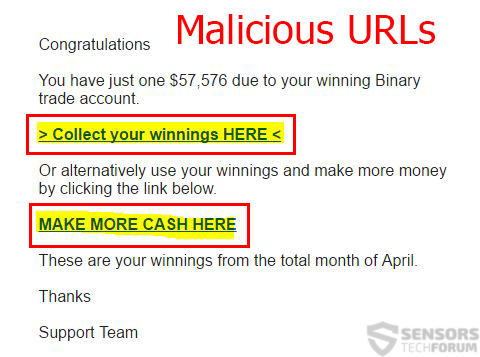
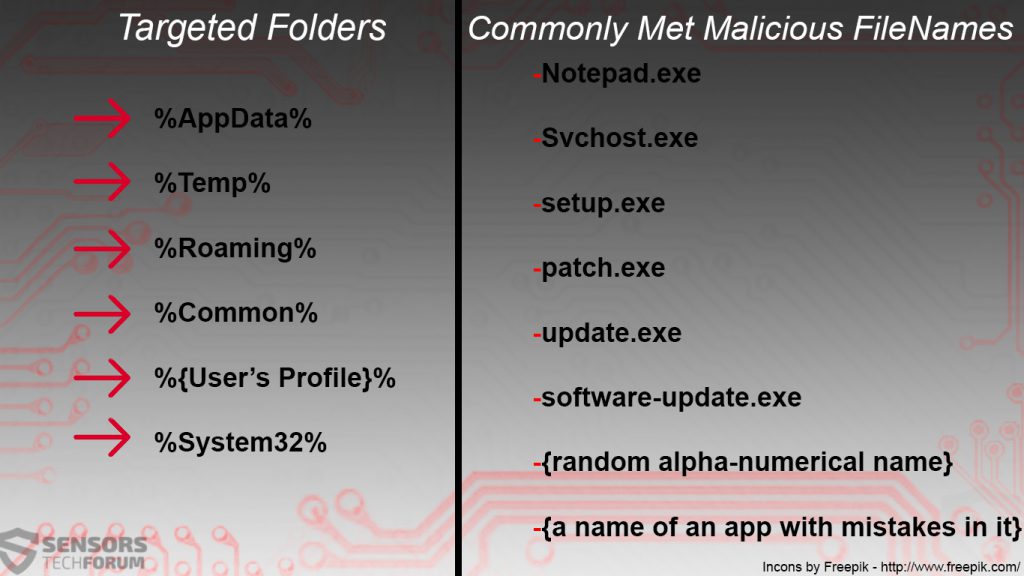
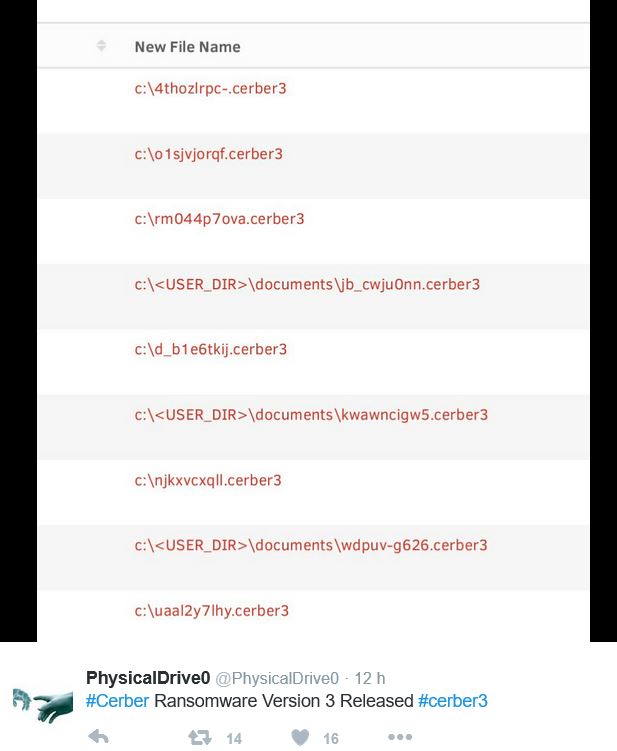
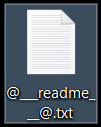

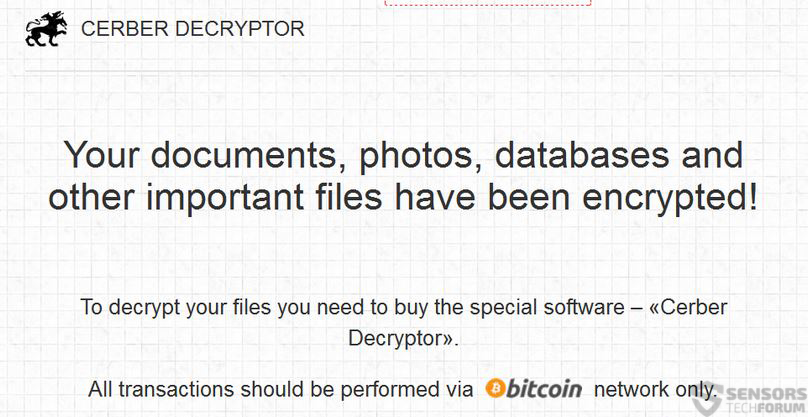

Hello,
Do you have a solution to decrypt the ceber3 files?
Hello, nico
At the moment we are testing the older decryptor on a testing computer. You can try it also yourself. Here are the instructions:
sensorstechforum.com/decrypt-encrypted-files-cerber-ransomware
Bear in mind that these instructions are for the first variant of Cerber. However if this turns out to be a modified version of the first variant but still using the same strategy, there may be a method to decrypt the files soon.
Sir, Please tell us if you it works on cerber.3, i also got infected by cerber 3 and looking for solutions.Thanks.
Are there known HASH/HASH’s for this variant?
Well, according to these guys, the situation with the HASH’s is quite relative: invincea.com/2016/06/hash-factory-new-cerber-ransomware-morphs-every-15-seconds
So even if there are there is a big variety, see..
Can I try to use cerber one decryptor on cerber three ?
Please help me, because the pc I’m using at work is infected with cerber3. I really need the files to be decrypted or I could Loose my job. Thanks in advance.
Sir,I am also a victim of this cerber3.I was very angry on
these shit dudes.But I didn’t lost my mind.They demand 500$.Today I have
found a great solution for this ransomware.I was searching for the
solution on various tech sites but found nothing.Sensors, if u want the
solution then contact me on my email-.No recovery software worked for me.Sir can i get a job on your company?But the job must be top salary paying.Otherwise i will join other Antivirus tech solution organisation.
Sir my file was also encrypt by cerber3 is there any solutions ?
Hello, Khalid see the reply above : )
I will paciently wait for that people who work hard to provide a solution for us but I have a question to ask, if anyone could answer it. Why cerber encrypted videos can be reproduced and photos can not be seen? The encryption does not affect to videos but in the name and photos are fully encrypted?
Thank you very much.
Hello, it seems that either the code of the ransomware may be poorly written or there is some type of defense that stops it from fully encrypting everything. Make sure to backup all of the files while you wait for a decrypter, even the ones that you can reproduce, because you may need them.
Good day ! Base in my case all of my excel files are encrypted but my video and pictures are okay.
Hello Khalid,
It seems that something interrupted the ransomware virus while it was encrypting files. It could be your antivirus protection (if you have any) or other type of protection. It is unfortunate that your excel files are encrypted, do you have any features that remember previous versions of excel documents you worked on, like shadow copies?
Hello Sir,
There is no shadow copies. We try to recover the files but all we recover are the encrypted files. Is there any solutions ?
Sir can you teach me how to recover the shadow files.Thank you
Vencislav Krustev buongiorno,
la prego, sa dirmi come decriptare i file con estensione cerber3? Ho bisogno di un suo aiuto.
Grazie
Ciao, purtroppo a questo punto non vi è stato un decryptor rilasciato per i file crittografati da Cerber3 ransomware. Questo è il motivo per cui vi consiglio di provare programmi di recupero dati per ripristinare almeno alcuni dei file e seguire questo articolo. Vi aggiorneremo non appena c’è un decrypter. Grazie.
I have got infected by cerber 3 ransomware 3 days ago, If anyone got any solutions please let me know asap. Thanks.
the solution (in portuguese Brasil): faça um backup e formate o sistema para liquidar o virus. Após renomeie cada um dos arquivos com a extensão de origem por exemplo: sdfsoid.cerber para xxx.xls
the solution (in portuguese Brasil): basta renomear o arquivo de origem e o problema da criptografia está acabado. Por exemplo 124usxo.cerber para xxx.docx
hi, i can help you for your .enc and .encrypted files, please send me 1 or 2 encrypted files with ransom note file (html or txt),